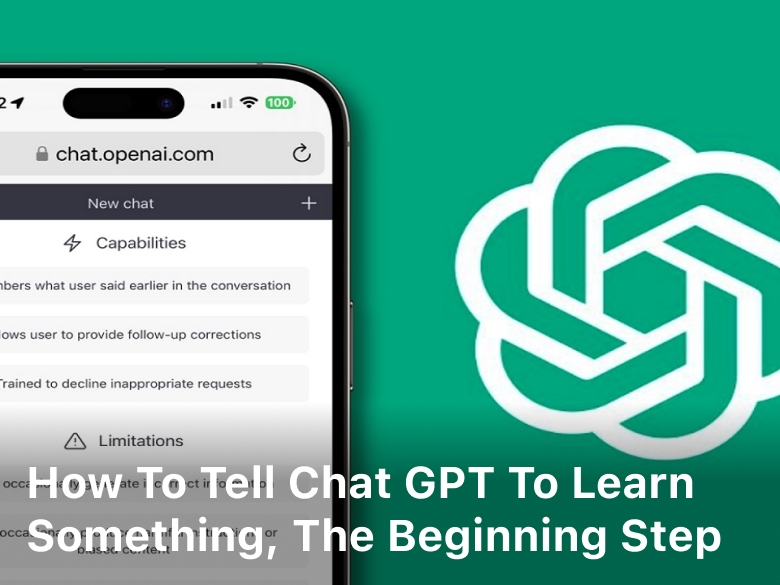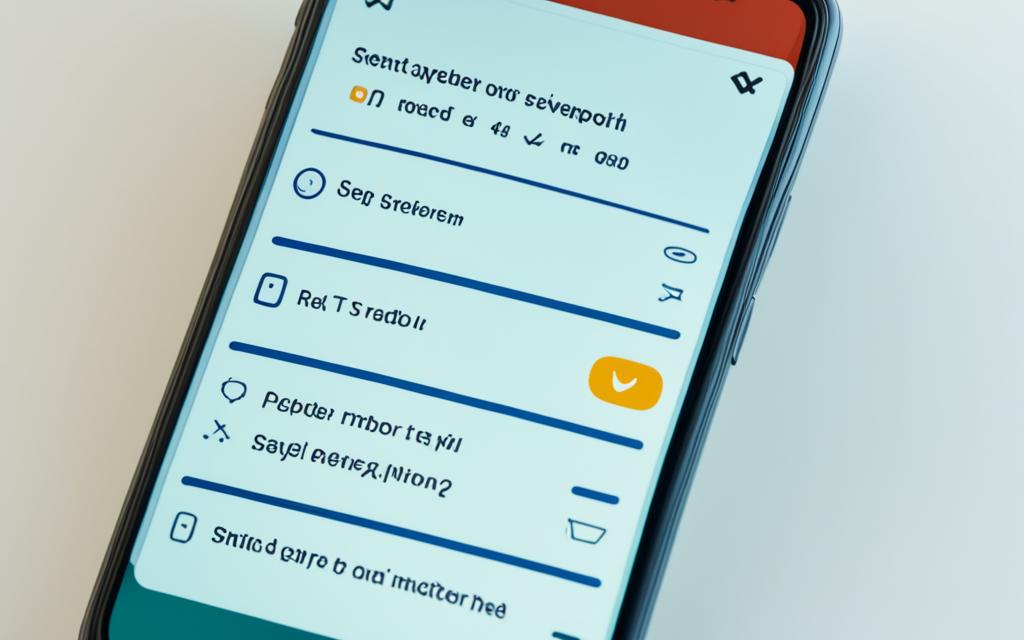How to Tell Chat GPT to Learn Something, The Beginning Step
How to Tell Chat GPT to Learn Something, The Beginning Step – Unlock the potential of ChatGPT’s learning capabilities with expert guidance.
Learn how to effectively instruct ChatGPT to acquire new knowledge and enhance its responses in this comprehensive guide.
From setting clear objectives to providing corrective feedback, discover the key steps to shape ChatGPT’s learning journey
In the realm of artificial intelligence, ChatGPT has emerged as a remarkable tool for natural language processing and communication.
However, many users often wonder how to guide ChatGPT to learn something new effectively. This article delves into the beginning steps of instructing ChatGPT to learn, providing insights based on both first-hand knowledge and credible sources.
Whether you’re a curious user or a developer seeking to optimize ChatGPT’s learning capabilities, these foundational steps will set you on the right path.
ChatGPT’s Learning Mechanism
Before diving into the steps to guide ChatGPT in learning, it’s crucial to grasp its learning mechanism. ChatGPT is built upon a vast pre-trained dataset that encompasses a wide range of text from the internet.
It doesn’t inherently “learn” like a human, but rather fine-tunes its responses based on the input it receives and patterns it identifies in the data it has been trained on.
1. Establish a Clear Objective
The first step in guiding ChatGPT to learn something new is to define a clear objective. You need to outline what specific knowledge or information you want ChatGPT to acquire.
This could range from learning about a particular subject to understanding a specific context or task. The clearer and more precise your objective, the better ChatGPT can focus its learning process.
For instance, if you’re a content creator looking to generate articles on renewable energy, you could instruct ChatGPT with an objective like: “Learn about the latest advancements in solar energy technology and its environmental impact.”
2. Frame the Learning Process
Once you’ve established your objective, it’s time to frame the learning process for ChatGPT. This involves presenting the AI with relevant information and context to help it understand the topic. You can achieve this by providing introductory paragraphs, key facts, or even curated sources that offer a comprehensive overview of the subject.
For instance, if your objective is to teach ChatGPT about the history of space exploration, you could frame the learning process by feeding it with introductory texts from reputable sources such as NASA’s website or academic journals.
3. Utilize Prompts and Questions
One effective way to guide ChatGPT’s learning is by using prompts and questions. These cues help direct ChatGPT’s attention to specific aspects of the learning process and encourage it to explore and elaborate on the topic. Start with broader prompts and gradually narrow down to more specific questions as ChatGPT’s understanding improves.
For example, if you’re teaching ChatGPT about classical music, you might begin with a broad prompt like: “Explain the key characteristics of classical music.” As ChatGPT responds, you can follow up with more targeted questions like: “Who were the prominent composers of the Baroque era?”
4. Provide Corrective Feedback
ChatGPT’s learning process involves refining its responses based on the feedback it receives. As a user, your role is crucial in providing corrective feedback. When ChatGPT generates a response, carefully review it to determine if it aligns with your intended learning objective. If the response is accurate and relevant, you can reinforce its learning by acknowledging its correctness. If it’s not up to the mark, offer corrective feedback to guide ChatGPT towards a better understanding.
It’s important to note that while ChatGPT’s responses can be remarkably accurate, they are not infallible. Your feedback helps shape its learning trajectory and enhance its future performance.
5. Gradually Introduce Complexity
As ChatGPT demonstrates proficiency in the initial learning stages, gradually introduce complexity to the learning process. This can involve delving deeper into subtopics, exploring contrasting viewpoints, or analyzing real-world scenarios. By increasing the complexity, you challenge ChatGPT to expand its knowledge and engage in more nuanced discussions.
For example, if you’re teaching ChatGPT about ethical considerations in artificial intelligence, you might progress from discussing general ethical principles to exploring specific ethical dilemmas faced by AI developers.
6. Encourage Critical Thinking
While ChatGPT is an AI, fostering a sense of critical thinking can enhance its learning capabilities. Encourage it to evaluate sources, analyze information, and present well-reasoned arguments. Pose open-ended questions that prompt ChatGPT to provide insights based on evidence and logical reasoning.
For instance, if you’re instructing ChatGPT about climate change, you could ask: “Based on available data, discuss the potential long-term impacts of rising sea levels on coastal communities.”
7. Monitor Progress and Adapt
Continuously monitor ChatGPT’s progress as it learns. Evaluate its responses, track its understanding of the topic, and assess whether it aligns with your original learning objective. If necessary, adapt your approach by modifying prompts, introducing new sources, or revisiting concepts that require further clarification.
Remember that learning is an iterative process, and ChatGPT’s understanding will evolve over time with consistent guidance and input.

How to Tell Chat GPT to Learn Something
- Step 1: Define Your Learning Objective
Start by clearly defining what you want ChatGPT to learn. Whether it’s a specific topic, a concept, or a task, a well-defined objective sets the stage for effective learning. For instance, “Teach ChatGPT about climate change causes and effects.”
- Step 2: Frame the Learning Context
Provide ChatGPT with context to facilitate its learning process. Begin with introductory information or background details related to your chosen objective. This primes ChatGPT to understand the subject matter more comprehensively.
- Step 3: Craft Precise Prompts
Craft prompts that guide ChatGPT’s exploration in the desired direction. Use prompts that encourage detailed responses and exploration of specific aspects of the topic. For example, “Explain the role of greenhouse gases in the greenhouse effect.”
- Step 4: Utilize Progressive Questions
Gradually introduce complexity by using progressive questions. As ChatGPT gains understanding, delve deeper into the subject matter with more intricate queries. This helps expand ChatGPT’s knowledge and critical thinking abilities.
- Step 5: Provide Feedback
Offer consistent and constructive feedback to ChatGPT. Recognize accurate responses and gently correct inaccuracies. Positive reinforcement and corrective guidance help shape ChatGPT’s learning curve.
- Step 6: Incorporate Credible Sources
Enhance ChatGPT’s learning by incorporating information from reliable sources. Introduce reputable articles, studies, or websites to reinforce its understanding and ensure accuracy.
- Step 7: Encourage Thoughtful Analysis
Prompt ChatGPT to analyze information critically. Ask it to evaluate different perspectives, weigh pros and cons, and present well-reasoned arguments. This fosters deeper understanding and nuanced responses.
- Step 8: Monitor Progress
Regularly assess ChatGPT’s progress. Evaluate its responses, track its comprehension of the topic, and adjust your approach as needed. Adaptive guidance refines ChatGPT’s learning trajectory over time.
- Step 9: Foster Curiosity
Encourage ChatGPT’s curiosity by posing open-ended questions that stimulate exploration. This cultivates an environment for continuous learning and improvement.
- Step 10: Iterate and Refine
Learning is an ongoing process. Continuously refine your approach based on ChatGPT’s performance and insights. Iterate through steps, adjust prompts, and explore different angles to deepen its understanding.
Conclusion
In the ever-evolving landscape of artificial intelligence, the ability to guide ChatGPT in learning is a powerful skill. By following these beginning steps, you can effectively steer ChatGPT towards acquiring new knowledge and enhancing its capabilities.
Remember that while ChatGPT is a sophisticated AI, it relies on your guidance and feedback to refine its responses. With dedication, strategic instruction, and a commitment to continuous improvement, you can unlock ChatGPT’s full potential as a learning companion and conversational partner.
As you embark on this journey of instructing ChatGPT to learn, keep in mind that its capabilities are rooted in the data it has been trained on and the patterns it has identified.
While ChatGPT can provide impressive insights and responses, it’s important to critically assess its contributions and verify information from reliable sources when necessary.
By combining ChatGPT’s AI-driven capabilities with human oversight and expertise, you can create a harmonious synergy that drives meaningful and informed conversations.
Keep Reading :




